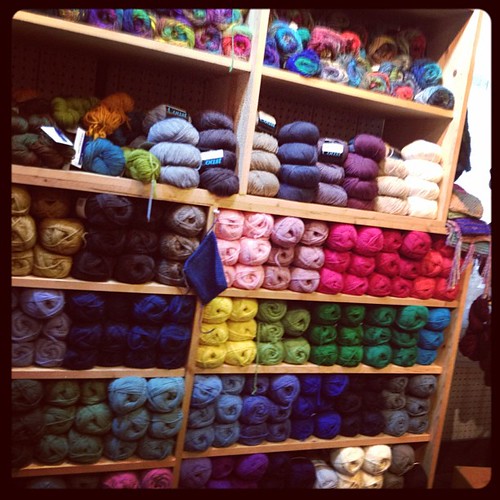Last week we talked about the difference between self-promotion and marketing. Marketing is made up of 4 aspects: Place, Price, Product and Promotion. In my next few posts, we're going to have examples of how you can use each one to share your work with more people.
The following example is an amalgamation of the work I've done with several fabulous knitwear designers.
If it sounds like you, that's a sign that your worries are normal!

Lindsay creates knitting patterns. She has an online shop on her site and sells through Ravelry. She has a well-read, well-liked blog (she's writing about the kind of things her Right People – knitters – want to read about).
But her sales have plateaued. She wants to reach a bigger audience and is thinking about doing some sort of promotion (buying an ad in a knitting magazine, offering 2 patterns for the price of 3)…and she wonders – is this the best way?
The problem with this plan:
Holding a sale is not a good match for her objective (reaching a broader audience) because who will she tell about her sale? Her current audience! A sale might generate more purchases from your current audience, but unless you pair it with something else, isn't going to introduce you to many new people.
While buying an ad on Ravelry might increase her Ravelry sales, buying an ad in a magazine is going to reach a lot of people who don't shop online, and who shop mainly in their local yarn shop.
And there, buried in her problem, is a hint for the solution.
She can reach a broader audience by focusing on Place instead of Promotion.
She can make her patterns available to more people by being in more places.
What are some of the places she could offer her patterns?
- She can offer a wholesale line of patterns to yarn shops.
- She can submit patterns to print magazines (the magazine pays you and their subscriber base becomes familiar with you and your work).
- She can vend at knitting and stitching shows, fill her booth with samples of her work and sell printed versions of her patterns.
- She can hold a trunk show at her local yarn shop (or even a regular boutique!) with samples of her work in a variety of sizes, so knitters can try on a pattern before they commit to making it.
Where else could this designer put her patterns to reach her people?
Have you thought of how Place is a marketing tool you can use? Where else can your products show up?
Don't know where your people are looking for your product?
Let's research that during an Exploration.


